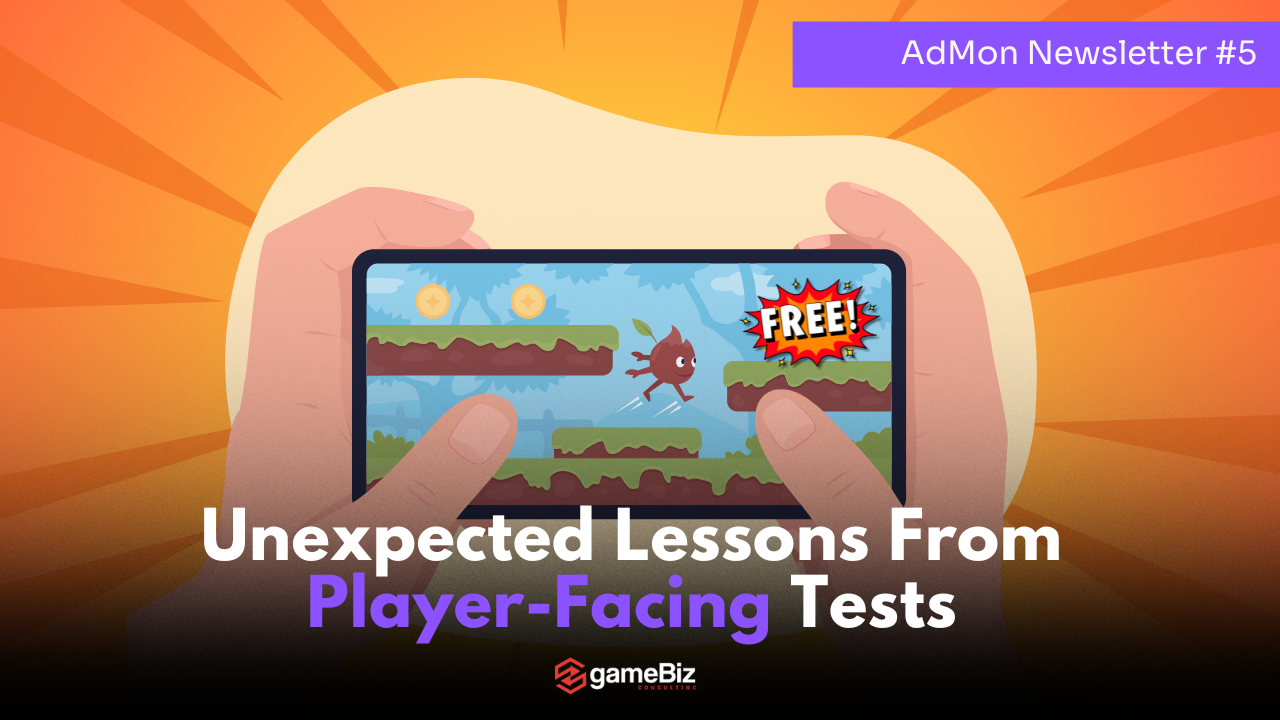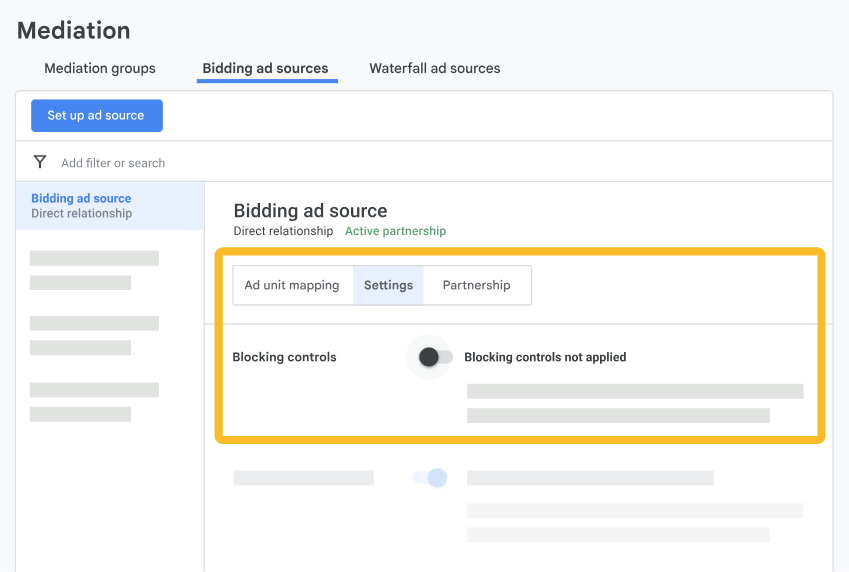Featured article
In the previous newsletter, we extensively covered tests that we did on the mediation and network side of the ad monetization business and the surprising results we got. In this edition, we would like to focus more on the in-game side of the coin and the player-facing changes that also ended in unexpected outcomes.
#1 How did playing around with rewarded and interstitial placements order generate a +30% uplift?
One of the common friction points between product and monetization is interstitial ads. That’s why we marked it as success when we convinced one of our clients to start showing interstitial ads to their non-paying users who have been in the game for more than a month.
The interstitials were positioned after the match, but only after the user was given the opportunity to double the resources earned in a match by watching a rewarded video ad. This led to a +23% increase in ad ARPDAU.
We were especially pleased because this publisher already tried to integrate interstitial ads on their own, but the results were a drop in retention without a meaningful revenue impact. So, what’s the surprise part?
Well, the client decided to keep experimenting with interstitial ads and decided to make a rather minor change in the setup. Instead of this order:
- Match finish > Results screen > Rewarded video to double the reward >> Interstitial ad
They decided to test a slightly changed order:
- Match finish > Interstitial ad >> Results screen >> Rewarded video to double the reward
This change resulted in up to a 24% increase in interstitial ad revenue. Just like that. No increase in caps, no added user frustration.
#2 How cosmetic changes drive a tremendous increase in rewarded video engagement rate?
When you work as a person in charge of revenue generation (be it as an internal employee or as a consultant), your job is to pay attention to every little detail and think of ways in which things could be better. Now, sometimes seemingly small changes can create a much bigger impact than expected. Here’s one example.
A casual game, IAP heavy (9% of revenue comes from ads), rewarded video is the only ad format used, three placements - free Gold in the Shop, free Lives, and post-match placement.
The set of changes we did for each placement:
- Free Gold in the Shop. The Gold balance is visible on the top of the Main screen and also serves as an entry point to the Shop. But there was no indication that there was something free available in the Shop. We changed this by simply adding a small “cloud message” saying “FREE GOLD!”.
- Free lives. Two changes were made here. The first one - make the video placement available whenever the user has fewer than the maximum number of lives. Previously, ads were available only when the user had zero lives. The second one. Since the Lives status bar is available on the top of the Main screen, we simply added a small label (“cloud message”) saying “Free life available”.
- After-match placement. We changed the color from green to yellow. Apart from that, we added the word “free” next to “the play icon”, which was already there. We wanted to make a clear differentiation between the IAP option (button that was shown on the right side of the post-match pop-up) and the ad option (button that was shown on the left side of the post-match pop-up). Apart from that, we added a 5-second countdown timer to awaken the sense of urgency.
You can see the results in the table below. Do any of these results surprise you?
#3 How can the safest ad format let you down?
In our experience, offerwall is among the easier ad formats to be implemented in the game. That is, of course, if you know what you’re doing.
Here are our most important guiding principles:
- The game has to be IAP-heavy. The currency has to be in demand in order for offerwall to work. Hyper-casual games are exactly the type of game where you don’t want to add offerwall.
- Allow offerwall to payers and non-payers.
- Offerwall placement should be inside the Shop and if possible, surface it in one or two more spots in the game to increase its visibility.
- Define the exchange rate properly. Say the Gems are the reward you want to give to users. You need to define how many Gems you want to give to users for every 1 USD that the network pays to you. You can’t be too generous or risk your IAPs, and you can’t be too stingy or no player will bother to complete the offers.
We’ve used these principles over and over again to successfully implement offerwall in a number of games from different genres. No negative impact on retention, IAPs, or rewarded video ads (that were already in the game).
- An idle game in which offerwall generated 8.4% of overall ad revenue upon integration.
- A simulation game in which offerwall generated 14% of the overall ad revenue.
- Another simulation game where offerwall represented 20% of all ad revenue.
- Several role-playing games where offerwall generates 13% - 36% of total ad revenue.
When there are rules, there is always an exception, of course.
In one of the games where we wanted to add an offerwall, things didn’t go as planned. In the experimental group, we saw a 1.5% decrease in IAP revenue. When we investigated further, it seemed that the conversion rate stayed intact (so we still had the same number of payers), but the average value of the purchase decreased. The offerwall revenue generated wasn’t enough to compensate for the decrease, so overall, the results were negative for paying users.
This led us to further analyze the results and check what kind of impact offerwall had on non-paying users. We split them into two groups - players who watch rewarded video ads and those who don’t.
- For rewarded video ad viewers (who are non-payers), our fear was that maybe, because of offerwall they would start watching fewer ads. This fear turned out not to be justified. Impressions/DAU and engagement rate were exactly the same in both control and experimental groups. The only difference between the groups was a slightly (-1.39%) lower eCPM on rewarded video in the experimental group, but we had to dismiss this as AB testing imperfection because there is no way for offerwall to negatively impact eCPM of rewarded video ads, as these operate completely differently (unlike rewarded video and interstitial ads). With this in mind, the conclusion was clear - any offerwall revenue generated by these users is extra revenue in the publisher's pocket.
- For players who are non-payers, non-viewers, we had no worries. The retention was stable and there was no revenue (IAP or rewarded video) that offerwall could cannibalize. Any revenue these users generate is extra.
Even though the results were not ideal, we could release offerwall to non-paying users (both rewarded video viewers and those who don’t watch videos). And the next step would be to tweak the test for the paying users. Unfortunately, the publisher was somewhat spooked by the results and decided to put the offerwall implementation project on the sidelines.
#4 When the first iteration doesn’t go well - try again!
Truly a hybrid monetization game. 50/50 split between IAP and rewarded video ads. No other ad formats used. The gameplay is casual.
We were on a mission to improve ad monetization in this game. Two objectives: increase engagement rate (and consequently impressions/DAU and ARPDAU) on rewarded video ads and expand the pool of users we are monetizing, by introducing interstitial ads for non-paying users.
In our first iteration, we bit off more than we could chew. We introduced a new placement, played around with some segmentation settings, and introduced interstitial ads. The results were hard to read. And what we did manage to read - we didn’t like very much.
- Extra revenue that came from a new rewarded video ad placement we introduced (after failing a level, continuing for free) was significant, but for certain user groups, it wasn’t enough to compensate for the IAP cannibalization we saw.
- Interstitials were not hurting the retention, but the revenue uplift was not as high as expected.
After that, we decided to do things one by one. We also changed the design of the new rewarded video ad placement, primarily when it was introduced (we decided to wait for users to complete more levels before offering this placement), and to have different caps depending on the country the user is coming from. The next iteration resolved the cannibalization problem, and this placement went on to generate 4% of overall ad revenue. With later iterations, we managed to increase this to 7%. Later on, we added a few more rewarded video ad placements, but none of them were able to outperform the pre-existing ones or the continue placement we introduced with these tests.
When it comes to interstitial ads, by increasing the caps for users from certain countries and introducing interstitial ads earlier to them, we managed to increase the positive impact they had on the business, generating 17% of overall ad revenue.
#5 To block or not to block your competitors?
The last example is kind of borderline. Even though the change is done on the network side, the change is also impacting users. It changes the content users see in the ads and can potentially have an impact on retention.
One of the oldest dilemmas in free-to-play mobile games that are monetizing with ads. This excludes hyper-casuals, where competitors bring an overwhelming majority of ad revenue and where blocking competitors would be like committing suicide. But for others, especially games that are making the majority of revenue via IAPs, this is considered a very important question.
We had a chance to extensively optimize the competitor blocking strategy for one of our clients, Playstudios, and their casino slots games.
Prior to us working with them, they were blocking hundreds of games with similar gameplay. We decided to challenge that approach. We did a thorough analysis, including consolidation of their block list across different ad networks. The list was previously inconsistent, and so even then, some competitor ads were coming through certain ad networks. We also did an analysis of the churn data available via Unity LevelPlay Ad Quality tool (from recently available for free to all publishers, as we reported earlier).
After careful consideration, we decided to unblock all competitors. We analyzed the churn, eCPM, and share of competitor ads before and after unblocking. You can see detailed results in the table below, but in none of the four apps was there any increase in churn. In turn, in (only) one of the apps, eCPM increased by +20% and ad ARPDAU was up +15%. Take a loot at the competitor share of revenue and churn data across four apps:

The conclusion from these experiments? Unless you try, there’s no way to know in advance what (un)blocking your competitors will do to your eCPM and ad revenue. If you want to read more details about this experiment, check out our case study here.
That’s all from us! Which of these five tests surprised you the most? What tests did you run that failed to meet your expectations? Don’t hesitate to share your thoughts with us!






















